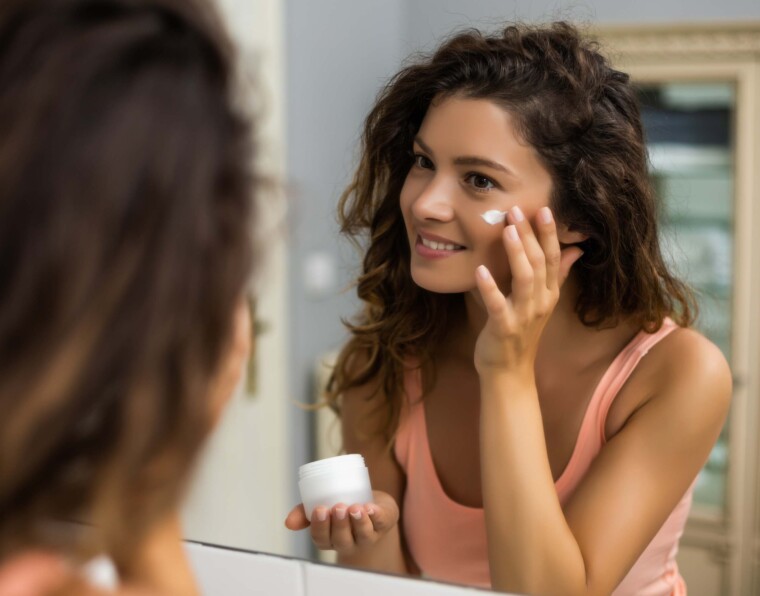Most likely, you’ve never heard of succinic acid. But take note: this hot new component will soon be mentioned often. Why? It’s one of those uncommon unicorns in the skincare industry, providing a range of advantages, including some rather potent acne-fighting capabilities without irritating the skin. We outlined succinic acid’s characteristics, functions, and importance for skincare, as well as why you should keep a watch out for it.
What is Succinid Acid?
Succinic acid, which is similar in function to salicylic acid and is naturally present in amber or sugar cane, is produced sustainably using a fermentation process. It helps to manage sebum, so lowering shine and excessive oil, which may cause breakouts, and has skin-softening and bacteria-inhibiting effects. Additionally, it corrects the pH balance of the skin, which certain skincare products may upset and cause redness, dryness, and cracked skin.
Although it is new to us in the cosmetics sector, succinic acid has long been utilized in Europe for its therapeutic benefits. However, its skincare benefits are particularly fascinating. Succinic acid is perfect for acne sufferers since it regulates greasy and congested complexions. Less blemishes and blackheads result from this. It is particularly helpful for those with sensitive skin that quickly becomes red or irritated, but it also works to reverse the physical indications of aging.
Benefits of Succinic Acid for Skin
While succinic acid is mostly promoted as a component that fights acne, it does a variety of other functions as well.
•Has antibacterial properties: It has been shown that succinic acid prevents the development of bacteria and fungus that may cause different types of acne.
•Is a potent anti-inflammatory: Succinic acid’s anti-inflammatory properties are helpful for treating acne, particularly severe, inflammatory cystic acne. Given that it may soothe the skin and aid in the healing of wounds, it’s also a useful element for those who are dealing with inflammatory skin problems like eczema and psoriasis. While succinic acid alone cannot cure any of these diseases, it may undoubtedly assist with the outward symptoms. Oh, and another pleasant thing? Additionally, the substance has some analgesic properties, making it a viable alternative for at least partially alleviating the pain brought on by acne and these other problems.
Succinic acid is a powerful hydrator because it has many structural similarities with the lipids found naturally in our skin. Curry concurs, pointing out that it contributes to skin conditioning and softening, with the advantages being increased when combined with hyaluronic acid.
•Provides antioxidant protection: It may be a successful anti-aging substance due to its antioxidant properties and capacity to prevent damage caused by free radicals. The other factor, too?
•Increases cellular renewal: Succinic acid, at the cellular level, promotes skin regeneration by speeding up metabolic processes, which may eventually aid enhance skin firmness and elasticity.
How do you use succinic acid in skincare?
Your serums or moisturizers should be used in conjunction with it. Since it has a tiny molecule and cannot pass through thick creams and oils, serums are where it is most often found.
Succinic acid will appeal to those who are beginning to think about anti-aging. In addition to its capacity to hydrate, which by itself helps to smooth out fine wrinkles, it also has antioxidant qualities that are similar to the lipids, or fats, in our own skin that keep it moisturized, smooth, and healthy. As a consequence, this serves as a buffer against the harm caused by free radicals. Things like UV radiation, pollution, and cigarette smoke are examples of free radicals. This thus avoids wrinkles and fine lines.
Who Should Use It?
All skin types, including those with sensitive skin, are safe. It makes sense to include this substance into your regimen since it offers so many advantages.
Side Effects
To cut a long tale short, there aren’t any. Succinic acid as being very harmless, unlikely to result in any problems, relaxing, moisturizing, and suitable for even sensitive skin. To be extra cautious, you may always start off gradually with a new component or do a patch test on the inside of your forearm.
What are the best succinic acid products?
1. The Inkey List Succinic Acid Acne Treatment
You got it: succinic acid is the star component in The Inkey List Acne Treatment. With its soft, non-drying spot treatment, acne inflammation is reduced, hastening the healing process without causing undue harm to the skin.
2. Perricone MD Acne Relief Calming Treatment & Hydrator
After using your cleanser, apply the Perricone MD Acne Relief Calming Treatment & Hydrator to treat acne while also moisturizing your skin. Lactic acid and succinic acid work together to eliminate acne-causing germs that have been lodged in your pores.
3. Elemis Pro-Collagen Energising Marine Cleanser
The Elemis Pro-Collagen Energising Marine Cleanser is a gel cleanser made with succinic acid and a combination of minerals (magnesium, zinc, and copper). Without depriving your skin of necessary moisture, it melts away makeup and clears debris from your pores.
4. Curél Intensive Moisture Facial Cream
Moisturizers are one of the many diverse items that include succinic acid. Even the driest and most sensitive skin types get relief and moisture with the Curél Intensive Moisture Facial Cream.
5. Perricone MD Acne Relief Maximum Strength Spot Gel
Another spot treatment for acne is the Perricone MD Acne Relief Maximum Strength Spot Gel, which is a favorite among our editors. The gel-like formulation targets zits and reduces their size over night, making them less unpleasant and noticeable.



